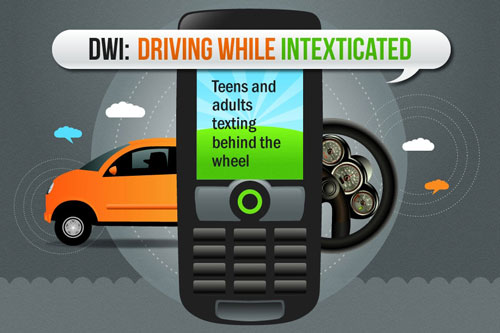Staying alert and avoiding dangerous behaviors while driving can save lives. Unfortunately, tens of thousands of people die in car crashes each year in the United States. In 2014, the National Safety Council (NSC) stated that 35,400 individuals were killed, primarily because of impaired driving.[1] According to their statistics, impaired driving includes driving while drunk, drugged, drowsy, or distracted. They show that most fatalities are caused by the following:
- Alcohol = 30.8%
- Speeding = 30%
- Distracted Driving = 26%
Here are five steps to stay alert and prevent motor vehicle fatalities:
- AVOID DROWSY DRIVING: Safe drivers must be mentally and physically ready to drive. This includes ensuring you get enough sleep. Did you know that, according to The Centers for Disease Control and Prevention (CDC), 33% of adults in the US aren’t getting enough sleep?[2] That means every third car you see during your commute has someone who is tired behind the wheel.
- AVOID MULTITASKING: You may fancy yourself an excellent driving multitasker, but the science says otherwise. The NSC shows that your brain’s ability to process moving images—which is just about everything when you’re driving—decreases by one-third when you’re multitasking. Don’t do your makeup, eat breakfast, or drink that coffee while driving. Don’t do anything that takes your attention off the road. Here’s an great image from the NSC that illustrates how multitasking affects your brain while driving:

(source: The National Safety Council) - AVOID YOUR CELL PHONE: Your phone is one of the single largest distractions you bring with you on the road each time you drive.[3] The Insurance Institute for Highway Safety (IIHS) quotes a 2015 study from the AAA Foundation for Traffic Safety that said: “almost one-third of drivers reported sending a text message or e-mail while driving at least once in the past 30 days, and 42 percent said they had read a text or e-mail.”[4] Not only is it unsafe to use your phone while driving, it can also cost you. New York, for example, is just one of several states that have enacted mobile phone and electronic device laws. If a police officer sees you using your cell phone while driving, you could get a ticket for up to $200. A second offense can go as high as a $250 fine. And a third offense can be a whopping $450.[5]

(source: textinganddrivingsafety.com) - WEAR YOUR SEATBELT: Seat belts save lives. The IIHS shows that safety belts helped save 12,584 people in 2013. Another 2,800 deaths may have been prevented if the person had worn his or her seatbelt.[6]
- AVOID SPEEDING: Know the speed limit and follow it. If weather conditions are present, slow down. If the sign says 50 MPH, but it’s raining, don’t drive 50 MPH. Adjust your speed to weather conditions as needed. Saving yourself a couple of minutes but increasing your chances of a crash simply isn’t worth it.
At Horizon Family Medical Group, we want you to be a safe and alert driver. Please wear your seat belt. Check your phone later. Get enough sleep. And slow down.
Sources:
[1] SAFETY ON THE ROAD: http://www.nsc.org/learn/Pages/nsc-on-the-road.aspx
[2] 1 IN 3 ADULTS DON’T GET ENOUGH SLEEP: http://www.cdc.gov/media/releases/2016/p0215-enough-sleep.html
[3] TEXTING AND DISTRACTED DRIVING STATISTICS: http://www.textinganddrivingsafety.com/texting-and-driving-stats
[4] DISTRACTED DRIVING: http://www.iihs.org/iihs/topics/t/distracted-driving/qanda#cite-text-0-4
[5] NEW YORK STATE’S MOBILE PHONE and PORTABLE ELECTRONIC DEVICE LAWS: http://safeny.ny.gov/phon-ndx.htm
[6] SAFETY BELTS: http://www.iihs.org/iihs/topics/t/safety-belts/topicoverview
DWI: DRIVING WHILE INTEXTICATED: http://www.textinganddrivingsafety.com/texting-and-driving-stats

